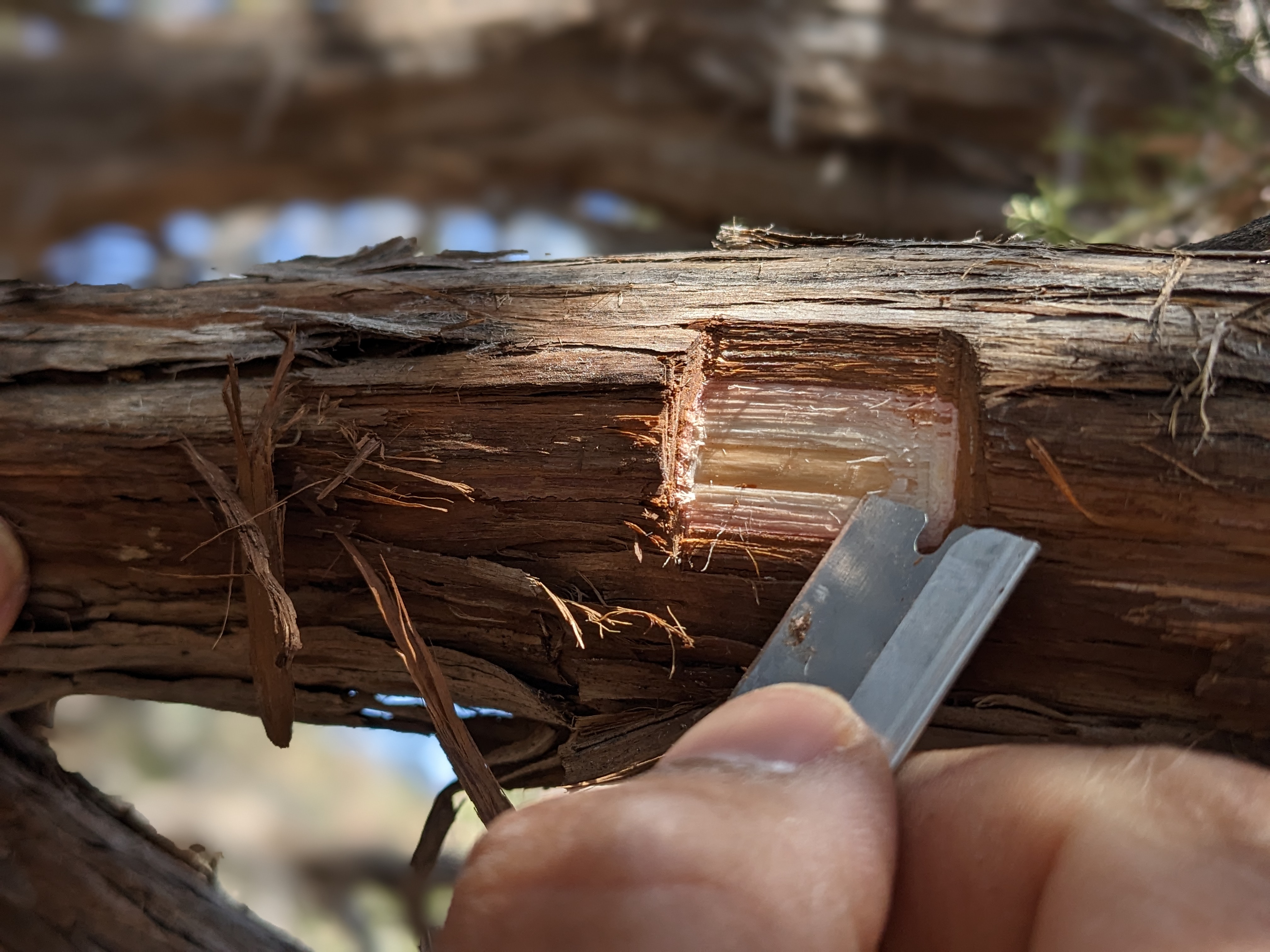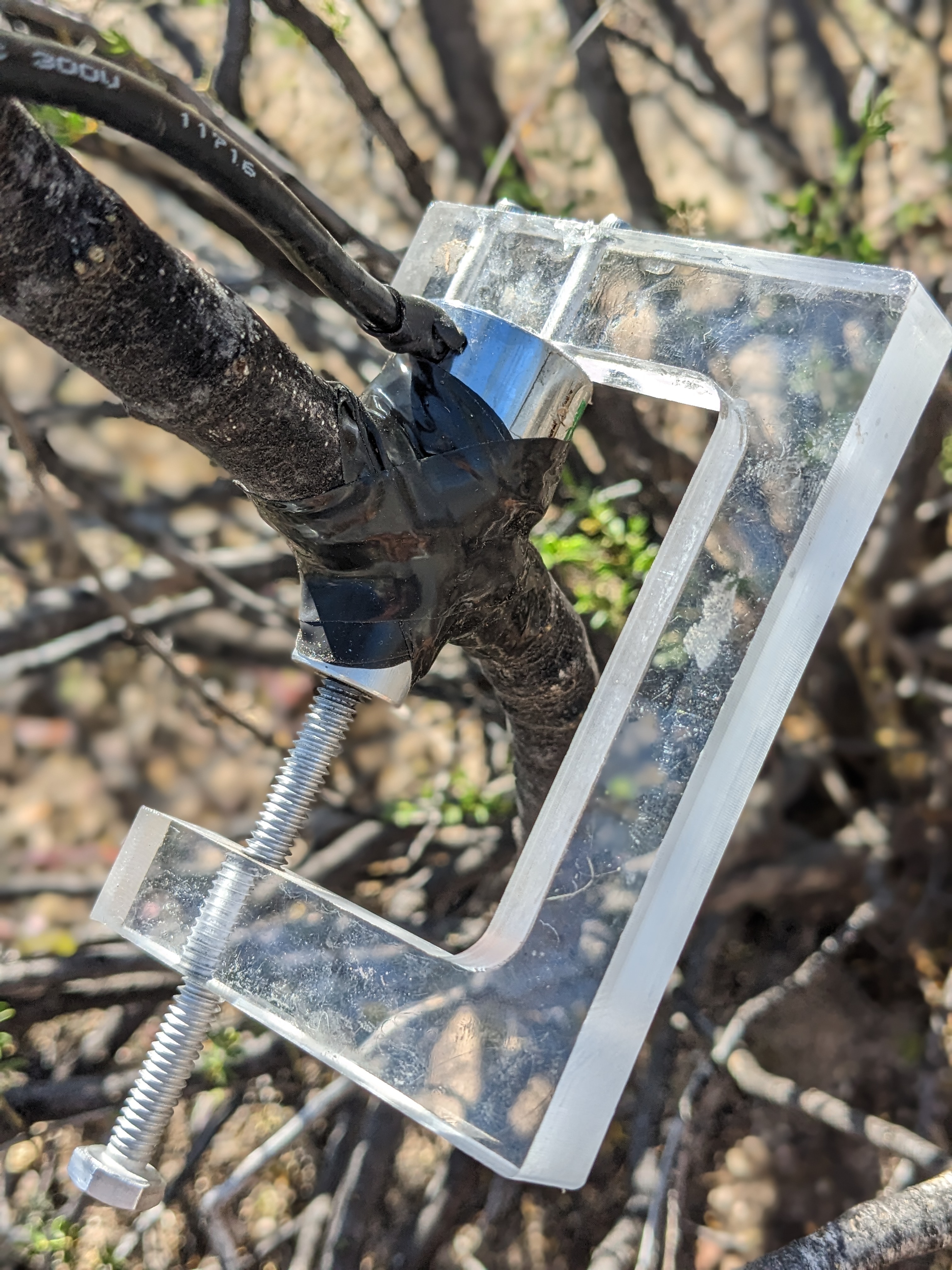
When I was on the academic job market, I pared back my teaching philosophy to something simple and not at all original: students learn by doing. This last week, while spending time with my former advisor George Koch (NAU) and Ben Umali (ICT International), I was reminded of why that simple mantra is so effective. Although emails and zoom calls are helpful, there was simply no replacement for watching Ben and George, asking questions in real time, and practicing the installations myself.
I have been successful with psychrometers so far, thanks to George’s lessons of almost 10 years ago. However, Ben shared a new method that limits xylem exposure, which likely increases the longevity of the installation. Using a flat razor blade, he makes initial transverse cuts spanning the diameter of the sensor head, which limits the width of the exposed xylem. After tangential cutting that exposes the different layers (outer bark, inner bark, phloem, cambium), Ben limits his motions to scraping, which minimizes over-cutting and ensures a flat surface for sensor attachment.

Indeed, if the sensor loses contact with the xylem, the same installation site could be reused by re-scraping the xylem, rather than creating an additional wound elsewhere. I wish I’d known this method 3 years ago when working on sagebrush, which had highly irregular xylem!
But the information exchange was not unidirectional. George pioneered the use of self-adhesive silicone tape1 to attach the sensor to the stem, which provides both security and a vapor seal, replacing the need for vacuum grease. Ben still advises a minute application of vacuum grease, but he seemed excited to include silicone tape in future installation guidelines. It was a fantastic opportunity to learn by doing, while surrounded by the beauty of Northern Arizona.

Footnotes
I have found this product at different locations depending on the hardware store, including random endcaps and the catch-all “tape aisle”. It has industrial uses in electrical and duct work, but it may not be found in those sections of the store. Can be removed residue-free with a pocket knife.↩︎